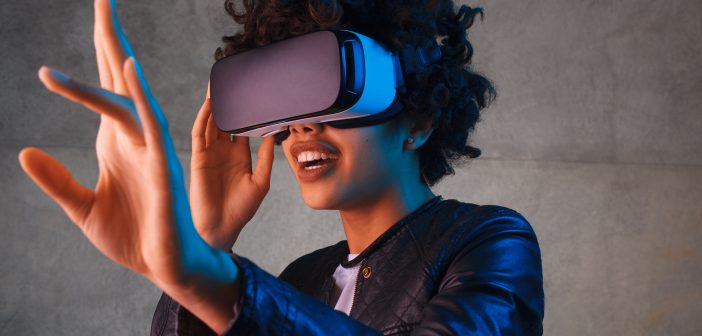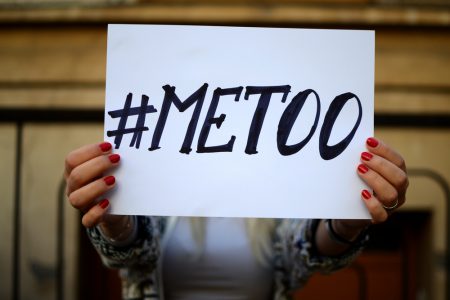Blurring the lines between the Real and the Virtual
2018’s cinematic blockbuster ‘Ready Player One’ may have felt like a futuristic depiction of the virtual world interlinking with the real, but in 2019 we’re set to see it become even more of a reality.
After the success of 2016’s breakout AR game, ‘Pokémon Go’, The Wizarding World of Harry Potter is set to launch their own AR version next summer titled ‘Wizards Unite’. Brace yourself for Millennials swapping Pokéballs for wands as they wave their smartphones in the air across the country.
But it’s not just gaming that the virtual world is infiltrating. Even plots of virtual real-estate in ‘Decentraland’ are selling fast as investors look to find the ‘next Bitcoin’ before it hits the mainstream, demonstrating once more that the lines of online and offline are becoming increasingly blurred.
Watch more: The virtual land selling for millions
Personalisation: from tailored ads to products that are unique to me
Things got personal in 2018. From the growth of ‘independent craft’ retailers such as Etsy to established brands letting consumers add their own twist on products – personalisation is on the rise. One example of this is Zozosuit – the custom-fit clothing start-up that uses 3D sensors to capture your measurements before sending you clothing to your exact specs.
With the advent of user data, brands now arguably know consumers better than they know themselves and are increasingly using it to make purchase decisions easier and faster to strengthen the consumer/brand relationship. For example, menswear start-up Eison Triple Thread has released a new web app that will recommend clothing to users based on their Spotify music preferences. Expect the recommendations to continue in 2019.
Computer says no / yes / whatever you want it to
 Alternative facts. Post-truth. Fake news. Russian Hacking, Brexit-meddling and Trumpian collusion. We don’t know whether we’re fighting misinformation or disinformation. It’s all a bit exhausting but it’s also more urgent than ever – when the inventor of the world wide web says we’re in trouble, we’re in trouble. Is there light at the end of the algorithm?
Alternative facts. Post-truth. Fake news. Russian Hacking, Brexit-meddling and Trumpian collusion. We don’t know whether we’re fighting misinformation or disinformation. It’s all a bit exhausting but it’s also more urgent than ever – when the inventor of the world wide web says we’re in trouble, we’re in trouble. Is there light at the end of the algorithm?
To see a renewed focus on fact, we’ll need a global shift in behaviour and consumption. Controlling online behaviour and social media is a gargantuan task and a mind-bogglingly complex problem, but as the tech-lash takes hold, baby steps are being taken to tame the beast. Whether they’re successful is another matter. Watch this computer-shaped space…
Read more: “I Was Devastated”: Tim Berners-Lee, the Man Who Created the World Wide Web, Has Some Regrets
Brands taking a stand
With the rise of movements such as #MeToo and the requirement for gender pay gap reporting, as an industry, we’ve had a serious wakeup call and have had to take a good hard look in the mirror. A number of brands have also successfully joined in the conversation, such as Always with #LikeAGirl and Dove’s Real Beauty campaign.
While we are in no way suggesting that brands shouldn’t take a stand to empower people and fight for equality, is there a danger of creating an environment that moves from one that brings everyone together, to one that inadvertently creates a sense of “us and them”?
Are brands such as Nando’s and their Pride campaign cheapening people’s efforts by jumping on the bandwagon or helping by building mass awareness?
Read more: Brands are still failing to connect with women in meaningful ways
Profit, politics and putting your money where your mouth is…
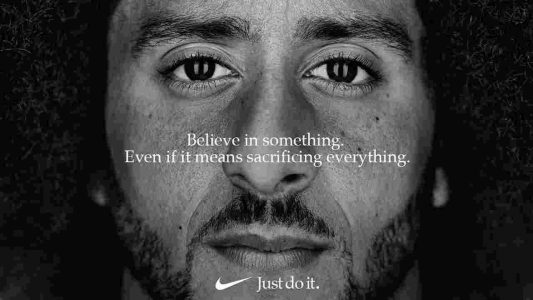 Increasingly brands are not just an extension of who we are, but what we believe in. And in line with the rise of an ‘Us vs Them’ world, brands are taking bolder steps to stand out by aligning with issues at the forefront of debate – pro-environmentalist, anti-gun lobby, anti-fur, anti-airbrushing, anti-fascist, anti-Trump.
Increasingly brands are not just an extension of who we are, but what we believe in. And in line with the rise of an ‘Us vs Them’ world, brands are taking bolder steps to stand out by aligning with issues at the forefront of debate – pro-environmentalist, anti-gun lobby, anti-fur, anti-airbrushing, anti-fascist, anti-Trump.
This behaviour is polarising but effective: alienating some shoppers for good, but skyrocketing appeal amongst others. Levi’s, Nike, Patagonia, Budweiser and Lush are just some of the brands who have put their heads above the parapet of late.
Losing customers in the short term, yes… But generating more meaningful relationships with fewer consumers? Priceless.
Read more: How Brands Should Handle Social-Political Issues in the Trump Era
Never-Ending Box Sets
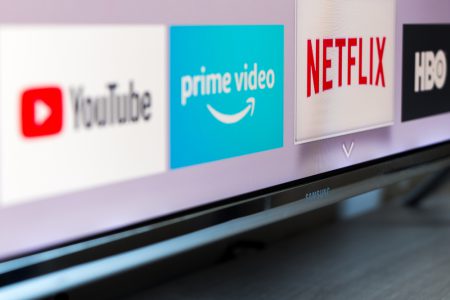
There has never been more quality, long-form content available to people as there is today. In just a few decades we’ve gone from a handful of broadcast television channels to an infinite world of content streamed online via subscription services.
15.4m people now subscribe to a video streaming service such as Netflix in the UK – overtaking Pay-TV for the first time – and this is expected to grow further in 2019 with the introduction of solutions from both Disney and Apple.
Ultimately, the ‘battle of the box sets’ is good news for quality content, but it remains to be seen what impact it will have on traditional content providers as the market fragments further.
Read more: Battle Rejoins Between TV’s Two Biggest Stars: Netflix and Amazon
I want it all, and I want it now
There aren’t many consumer needs that can’t now be met ‘on demand’. Hot on the heels of familiar categories like TV, taxis and take-away food, we now have laundry, blow dries and even dogs for loan. It seems that waiting for anything has been consigned to the past, with our mobile devices acting as mission control.
The latest dynamic is the shift in profile of ‘on demand’ customers. Once solely the domain of a younger, wealthier demographic, older and less affluent customers now appear to be craving immediate gratification too.
The brands that thrive in this crowded space will be the data ninjas who use customer feedback and usage trends to refine their offerings. The best things come to those who don’t wait.
Read more: Spiffy CEO Scot Wingo Shares the Top Trends Disrupting the On-Demand Economy
Everything is borrowed:
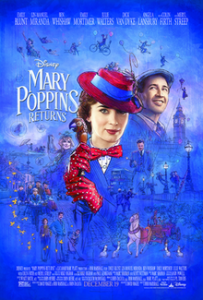 These are uncertain times. From the daily twists and turns of Brexit, to the unpredictable and often devastating extreme weather we are seeing across the globe, it’s almost impossible to predict what will happen next.
These are uncertain times. From the daily twists and turns of Brexit, to the unpredictable and often devastating extreme weather we are seeing across the globe, it’s almost impossible to predict what will happen next.
In times of upheaval, our natural instinct is to seek out the comfort of the familiar, which explains why nostalgia is big business these days. The first Mary Poppins film arrived in cinemas in 1964, and 54 years later there are high expectations for the remake. Similarly, nineties sportswear brands have made a resurgence on urban streets everywhere, albeit with a 2018 twist.
With more platforms to discover, customise and share at our fingertips than ever before, and no sight of calmer days ahead, don’t expect this trend to disappear any time soon.
Read more: Britpop is back! What’s behind the 90s music revival?
Is the UK becoming an advertising Nanny State?
In November, it was confirmed by the Mayor of London that there will be a ban on all HFSS advertising across the TFL out-of-home estate from February 2019 in a bid to tackle child obesity. It will cover all junk food and drinks, and anything considered to be “less healthy” by Public Health England guidelines.
The ban has been negatively received by industry bodies such as the IPA, ISBA and Advertising Association, fearing it spells only loss in revenue and unfair difficulties for businesses, and will ultimately fail to achieve its goal.
Will this prove a positive step in the right direction for future generations, or is it just more nanny state interference?
Read more: 10 key facts about HFSS advertising in the UK
Switching off in a digital world
In an increasingly digital world, we’ve all become more and more dependent on our smartphone appendages. If we leave home without them or find ourselves in an area with little to no reception, we hate to admit it, but we feel lost. Studies have shown that our attention spans, social skills, and imaginations are subsequently all taking a hit, so unsurprisingly, this has led to a bit of an uprising, with people fighting back against their digital addictions.
There’s a growing number of brands encouraging us to give digital a rest, and reconnect with our friends, families and surroundings in general in a more personal, human way. From digital detox retreats, smartphone bans in schools, and a subtler nudge to put our phones down and step outside, brands are stepping up and leading the charge.
